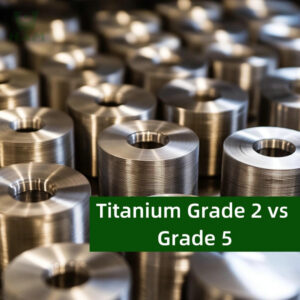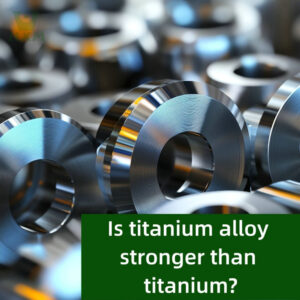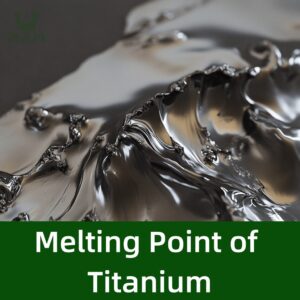What is NAS 329J3L?
- September 29, 2024
- 9:23 pm
- 1458
NAS 329J3L is an austenitic-ferritic duplex stainless steel with a chemical composition consisting primarily of 22% chromium, 5.3% nickel, 3.2% molybdenum and 0.16% nitrogen. This material has excellent corrosion resistance and high strength properties, especially in the local corrosion performance is better than SUS 316L and SUS 317L.
NAS 329J3L is used in a wide variety of industrial applications such as chemical plants, desalination plants and seawater pumps because of its excellent resistance to corrosion by chloride ions. In addition, it has good resistance to stress corrosion cracking, which enables it to maintain stable working performance in harsh environments.
In terms of mechanical properties, NAS 329J3L has a tensile strength of up to σb≥620MPa, an elongation of about 18%, and a hardness in the range of HRC≦32, HV≦302, and HB≦320. These properties allow it to perform well in both high and low temperature environments, but it is important to note that it needs to be handled with special care during cold working due to its high yield strength and low elongation.
For welding, NAS 329J3L can be TIG and MIG welded as well as hand-arc welded, and no preheating or post-heating treatment is required for welding using specialised solders. In order to prevent embrittlement problems caused by the formation of the σ phase of intermetallic compounds, the temperature between weld passes should be controlled at 100°C or less.

Advantages
1.Superior Corrosion Resistance
- NAS 329J3L outperforms common SUS 316L and SUS 317L in localised corrosion resistance. This material can effectively resist a variety of corrosive media, including pitting and crevice corrosion caused by chloride ions.
2.High strength:
- The material not only has good corrosion resistance, but also has high mechanical strength. The tensile strength can reach σb ≥ 795MPa, yield strength σb ≥ 550MPa, elongation δ ≥ 15% and hardness ≤ 310HB.
3.Wide range of applications
- Due to its excellent corrosion resistance and strength properties, NAS 329J3L is widely used in chemical plants, desalination plants, seawater pumps and other industrial fields.
4.Good welding performance
- Similar to standard austenitic stainless steel, NAS 329J3L can be welded by TIG welding, MIG welding, and manual arc welding, and does not require preheating and post-heat treatment. In order to prevent embrittlement due to the formation of the σ phase of intermetallic compounds, the temperature between welding passes should be kept below 100°C.
5.Physical and chemical properties are stable
- The density of the material is 7.98g/cm³, the melting point is between 1300-1390°C, it is non-magnetic, and the heat treatment temperature ranges between 1000-1050°C, with a holding time of 1-2 hours followed by rapid air or water cooling.
Application of NAS 329J3L
NAS 329J3L (SUS 329J3L, UNS S32205, S31803) is an austenitic-ferritic duplex stainless steel with excellent corrosion resistance and high strength properties. The use cases of this material in desalination equipment are mainly based on its excellent resistance to localised corrosion.
NAS 329J3L is widely used in chemical plants and desalination plants. This material has better resistance to localised corrosion than the common 316L and 317L stainless steels, making it particularly suitable for use in desalination plants, which are often exposed to high salinity seawater and prone to corrosion.
In addition, NAS 329J3L is also used in seawater pumps and other related equipment for the seawater environment, which further demonstrates its importance in desalination and related industrial applications.
To summarise, application examples of NAS 329J3L in desalination equipment include but are not limited to:
- Complete sets of seawater desalination equipment
- Seawater pumps
- Chemical plants
GH3030, also known as Alloy 800, is a nickel-chromium alloy primarily used for its high temperature resistance and stability. This alloy is characterized by its strength and resistance to oxidation and carburization at elevated temperatures. It is commonly used in applications like heat exchangers, furnace components, and chemical processing equipment due to its excellent thermal properties.
Nitronic alloys are austenitic stainless steels that exhibit high strength and superior corrosion resistance. Key properties include:
- Excellent mechanical strength and toughness even at cryogenic temperatures.
- High wear resistance due to nitrogen strengthening, making them suitable for severe service conditions.
- Good corrosion resistance in a variety of environments, surpassing many conventional stainless steels.
- Resistance to galling and fretting, which makes them ideal for high-friction applications like fasteners and valve stems.
1.4108 is a high-carbon martensitic stainless steel known for its hardness and wear resistance. It’s particularly used for applications requiring high hardness such as cutting tools and bearings. The properties of 1.4108 include:
- High hardness and wear resistance, which can be enhanced further through heat treatment.
- Moderate corrosion resistance, though not as high as austenitic or ferritic stainless steels.
- Good toughness when tempered properly.
Inconel and Nitronic are both high-performance alloys but serve different purposes:
- Inconel is a family of nickel-based superalloys known for their ability to withstand extreme temperatures, corrosion, and pressure. They are typically used in high-temperature applications such as jet engines and chemical processing equipment.
- Nitronic stainless steels are nitrogen-strengthened austenitic stainless steels known for their strength, wear resistance, and good corrosion resistance. They are more commonly used in applications where high strength and corrosion resistance are required at moderate temperatures, like marine hardware and pump shafts.
Yes, Nitronic is a type of stainless steel. It belongs to the group of austenitic stainless steels that have been enhanced with nitrogen to increase yield strength and corrosion resistance without significantly reducing the elongation or toughness of the material.
Nitronic 40 and Nitronic 60 are both types of Nitronic stainless steel but differ primarily in their strength and corrosion resistance:
- Nitronic 40 (also known as Alloy 21-6-9) offers excellent oxidation resistance, high strength, and good corrosion resistance. It is often used in aircraft applications and as welded components.
- Nitronic 60 is known for its excellent galling and wear resistance, superior to that of most other stainless steels including Nitronic 50 and 40. It is often used in applications requiring high wear resistance like automotive valves, fasteners, and marine shafts.
Recent Blog
If you found this article good, feel free to share it on your other social media platforms.









